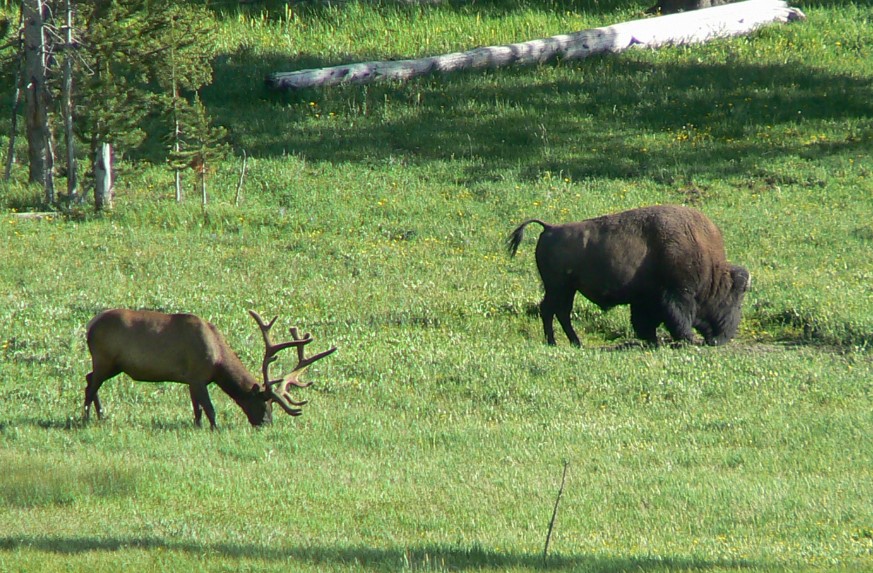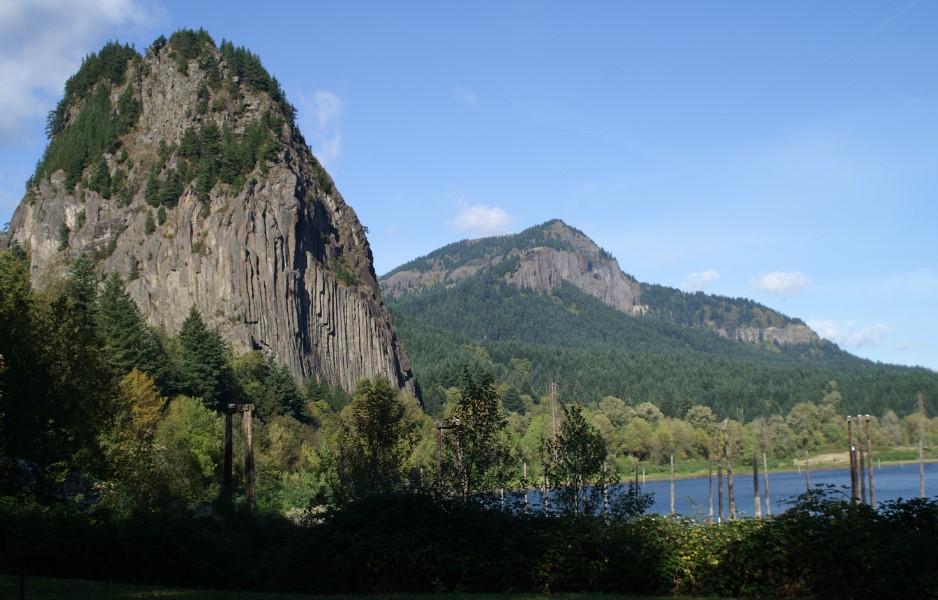Where to Spot Wildlife in Yellowstone National Park – Among the most important wildlife habitats on earth, Yellowstone is considered to be one of the most important. In the thermal areas, you can find lesser-known reptiles and insects, as well as dramatic bald eagles and grizzly bears. These giant herds of elk, the thousands of bison, and all their brethren are free-roaming, which is what makes this wildlife collection so unique.
It is extremely rare to see grizzly bears and wolves in the wild in the Lower 48 at the moment. According to some, bison (buffalo) once covered the Great Plains before being hunted off the plains and driven to the Yellowstone Plateau. As they walk along the main thoroughfares without stopping, this herd seems to care little for the human observers.
A suitable place to see them is the Lamar, Hayden, and Pelican valleys; the Bechler River area; and the geyser areas near the Firehole River in the summer months. They are often seen munching grass, wallowing in dust pits, and even wrestling sumo-style for mates.
Be aware of these behemoths and keep a safe distance. Their eyesight is poor and their disposition is cranky, and they can move rapidly (up to 35 mph) so they can batter anyone who invades their territory. The number of bears in Yellowstone has been subject to debate among biologists, but most agree that their numbers are on the rise.
A record amount of car-bear accidents occurred in 2007, however, adding to the rise in bear fatalities. It seems that their food supply stabilized after the wolves were reintroduced (more carcasses) and fishing regulations were enacted to encourage cutthroat fishing.

It is estimated that there are about 1,000 black bears and 600 grizzlies in the Greater Yellowstone Ecosystem. Bears used to graze in open-pit garbage dumps near lodges and tourists would hand-feed bears who begged along park roads decades ago. As a result of the closure of the dumps in the 1970s and the prohibition of bear feeding, bear populations plummeted. Deteriorating habitats surrounding the park also contributed to its decline.
Although bears are creative omnivores, they have discovered new sources of food in the wild. It has been assessed that about three-quarters of their diet consists of vegetarian foods, such as elk and bison (the very young or very old) and wolf kills in the spring. The Canyon, Tower, Madison, and Old Faithful areas are most commonly sighted with black bears in the spring and fall, with cubs in tow. They eat green grass, berries, ants, and carrion.
In rare instances of bear attacks on humans, grizzly bears are likely suspects due to their unpredictable behavior. However, black bears have also proven to be capable in this regard. They are kept under close observation by rangers near trout-spawning streams and carrion sites during late spring to minimize the likelihood of encounters. Grizzlies are most likely to be seen in the Lamar and Hayden valleys during May and June before they retreat into the backwoods.
Backcountry travelers often see bears near the park’s southeast border in Thorofare Country, where bears (and avid anglers) in the spring travel to the Yellowstone River headwaters to catch spawning cutthroat trout. A population of 60,000 elk (wapiti) is estimated to inhabit the ecosystem, although numbers in park boundaries have declined in recent years. Elk are usually 900 pounds, so you should be able to distinguish them from deer or antelope by their size. Besides having a large antler rack, chestnut-brown heads and necks, and a distinctive tan patch on the rump, the males also have chestnut-brown rumps.
In the meadows between Old Faithful and Madison Junction, one herd can usually be seen; the other is usually found around Mammoth Hot Springs. During winter, the northern Yellowstone herd descends to the National Elk Refuge near Jackson, while the southern herd visits a grazing area near Gardiner. A throaty gargle that morphs into a high whistle is the distinctive bugling of males in the fall. When tourists flock to see them, moose are not very patient; they’re grumpy loners and more solitary than elk.
The animals usually appear around streams and alder thickets, particularly near Canyon and Shoshone Lake in the backcountry. Antlers hang like bells from their necks, and dewlaps hang from the back of their necks. Fall is the season when bulls become particularly ornery, cows charge at any perceived threat to their calves, and moose travel at 30 mph.
Keeping a wide berth from them is the best option. Pronghorns are often spotted grazing near Yellowstone’s northern entrance, usually labeled antelopes (but unrelated). Whenever photographers approach them, these flighty animals take off at 45 mph due to their excellent vision. The number of pronghorns in the park has plummeted in recent years, so they’re no longer as common as they were in 1990.







